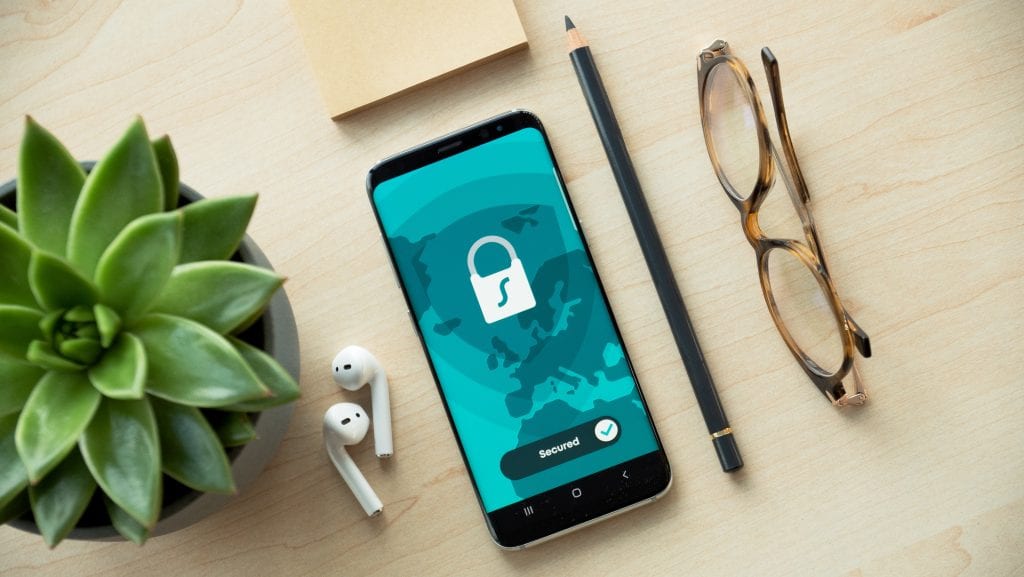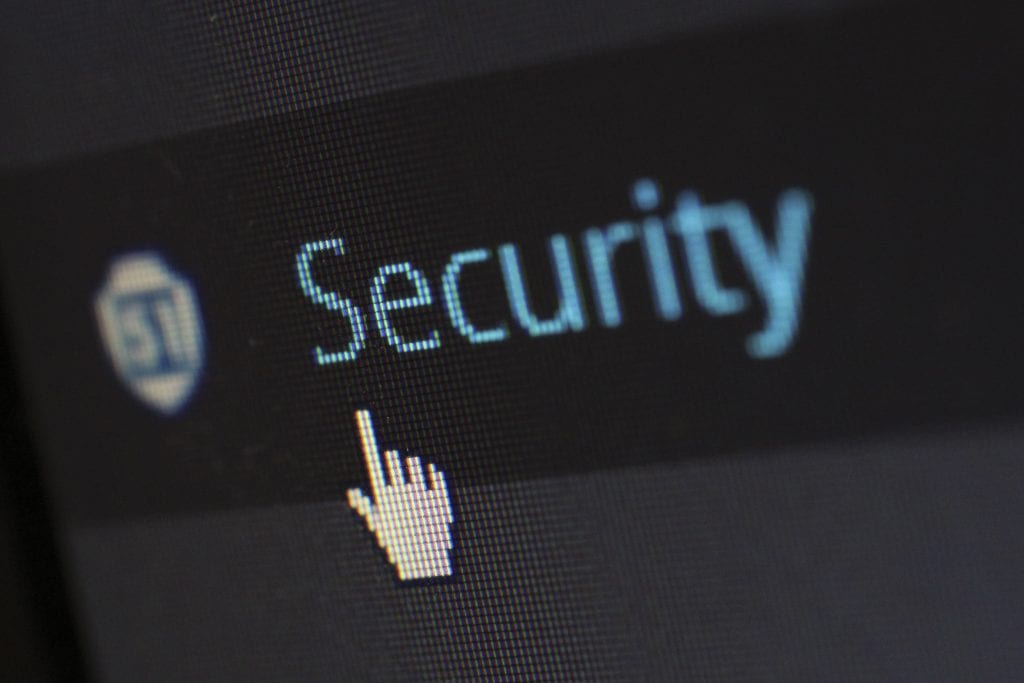
Nov
2

ESET, a leader in information security, presents a ranking of the most common cyber threats in 2021. In particular, according to ESET telemetry, the tactics of extortion programs have become more aggressive, and the number of attacks by selecting passwords and phishing emails has increased.
In addition, ESET found DevilsTongue spyware targeting activists and journalists, as well as new activity by Gamaredon and APT Dukes in Europe. The latter has spread phishing messages to diplomats, think tanks, and international organizations in at least 12 countries.
Extortion programs
Such threats have often made headlines in recent times, attacking critical infrastructure and large IT vendors. The level of detection of this malware remained stable with several periods of significant growth.
In particular, in the last 4 months, three main waves of the spread of extortion programs have been recorded. These included an attack that shut down Colonial Pipeline, the largest pipeline company in the United States, and an attack on a supply chain using a vulnerability in the Kaseya VSA software.
In both cases, the attackers targeted financial gain, not cyber espionage. In particular, the cybercriminals who attacked Kaseya demanded a ransom of $70 million, which is the highest known to date.
The tactics of extortionist programs have become more aggressive. This led to the involvement of law enforcement agencies, which in turn exposed several groups. However, the same cannot be said of TrickBot, whose number of detected samples has doubled since last year’s disposal.
Threats to information theft
The number of such threats increased by 15.7%. Such growth is quite predictable because, in the age of the Internet, information is a commodity that can easily be monetized by attackers. Among the 10 most common threats in this category were spyware, which took the first 6 places in the list, and backdoors, which took the next 4 steps.
Although banking malware is not in the top ten most common this time, the number of detected samples of this type has also increased.
Threats that spread through e-mail
The number of harmful e-mails also increased during the analyzed period. Among them were mostly phishing and fraudulent reports. E-mail threats peaked in the second half of August 2021, with the most common threat being the DOC/Fraud Trojan. This threat was mainly spread through e-mails in which fraudsters blackmailed recipients with videos of adult content.
The Microsoft brand was most often used in phishing emails. Attackers also often impersonated the DocuSign electronic signature service and the WeTransfer file sharing service, indicating in a letter that they were sending documents to the recipient for download.
Fake payment requests, followed by counterfeit banking communications and delivery of goods, continued to be the most common topic in malicious emails.
At the same time, the topic of COVID-19 was also used in spam emails, and fraudsters pretended to be government agencies and health care organizations to force recipients to share confidential information.
Threats to macOS and iOS
In 2021 the level of threat detection for macOS increased by almost 10%. This is due to an increase in the number of detected Trojans by almost half compared to the previous period. Their activity even outpaced the potentially unwanted programs (PUAs) that previously predominated among the threats to macOS.
The largest number of detected samples fell on the program OSX/Mackeeper PUA, which displays unwanted advertising. It is worth noting that this malware is the first in the ranking of threats to macOS for the second year in a row.
Threats to Android
The activity of such threats increased by almost 33% due to the growing proliferation of spyware, advertising, and banking malware. In particular, the activity of the latter species continued to grow since the beginning of the year, increasing by almost half between May and August.
In addition, the activity of malicious applications for cyberbullying has increased. During the analysis of 86 programs with such functionality, ESET specialists revealed numerous vulnerabilities that could endanger not only the data of the victims but also the spies themselves.
Picture Credit: Pexels

Apr
7

Phishing is far from new. The number of phishing attacks is growing every year, and the methods of attackers are improving.
What are phishing attacks?
Phishing attacks are a type of online fraud in which cybercriminals seek to get hold of personal data – logins and passwords of social networks, mailboxes, bank accounts, and bank card numbers.
Types of phishing:
- Mail. The oldest method of obtaining confidential data is through email campaigns with letters of various contents – from tempting offers to real threats. Using psychological influence, cybercriminals successfully obtain the personal data of users.
- Online. It appeared much later than the mail one and is a more sophisticated way of extracting information. Since in this case, the attackers use high-quality copies of authoritative sites that require the introduction of confidential data.
That is, the user enters his username and password, or bank card details in the form, without noticing that the address has been spoofed. In this case, the merit of the anti-phishing functions of antivirus software is especially great, since they detect and block such pages even before the user has time to see them.
Also, larger cyberattacks target the devices of employees of large companies to gain control over control systems.
Why you need anti-phishing software?
The need to use anti-phishing anti-virus is due to the statements of various organizations in the field of cybersecurity about the rapid development of phishing in the world.
Of course, in most cases, the goal of cyberattacks was large firms and gaining control over their infrastructure, but the scale of the problem is understandable, and the need to combat Internet fraud is obvious.
For example, compared to 2017, the number of cyberattacks in 2018 increased by 60%.
According to the results of their observations, almost a third of office workers safely open emails from strangers, therefore, become potential victims of phishing.
Internet fraud is rampant and, as practice shows, increasing cyber literacy has not yielded tangible results.
Phishing attacks are literally a key threat to information security.
Therefore, the problem should be solved by using anti-virus software, which provides a high-level protection against phishing attacks.
Effective anti-phishing protection is implemented only in paid versions of antivirus software. Let’s take a look at three of the most popular ones.
Norton
In Norton antivirus, anti-phishing protection works in three directions at once:
- Blocking phishing sites. Norton quickly detects and automatically blocks sites that are fraudulently trying to obtain personal information.
- Checking links in the social media feed. In addition to sending out luring links by mail, cybercriminals now post them on the pages of the most popular Internet communities. Norton has addressed this issue by checking social media links.
- Safely store usernames and passwords and protect your identity. With the use of antivirus, the threat of receiving user data during automatic input is reduced to zero.
Key benefit: Norton’s antivirus protection is available in even the most basic version of Norton Antivirus.
Kaspersky
To assess the effectiveness of Kaspersky Lab products in terms of anti-phishing protection, it is better to look at the test results of the independent organization AV-test, according to which Kaspersky Anti-Virus recognized 100% of phishing links, of which none were false.
- Automatic module for checking virtual keyboards and links.
- An updated anti-phishing module with a heuristic analysis function that can get detailed information about a suspicious site.
- Data collection protection. A special module timely monitors and blocks resources that record usage scenarios.
Antiphishing functions are also available in all versions of Kaspersky anti-virus software, but remember that the basic package is available only to PC users and only for Windows.
Panda
In general, Panda’s antiviruses can boast of both an extended set of user settings and the availability of an anti-phishing module for all packages, even the basic one. The software is available for both PCs and mobile devices running any system.
However, in terms of anti-phishing protection, one drawback should be highlighted: when tested by an independent organization AV-test, it was Panda that showed a relatively slow performance of the anti-phishing module.
Picture Credit: Pexels

Sep
21

Attacks on 5G
The move to 5G is predicted to exacerbate threats to the telecom industry as 5G’s architectural features open up opportunities for new types of attacks on carriers’ networks. At the same time, according to Positive Technologies experts, during the transition period, when networks of previous generations will still be used for voice calls and SMS, all the shortcomings of their protection will be relevant for 5G subscribers for a long time.
Deepfake development
With the development of artificial intelligence technologies and neural networks, attackers will be able to create a variety of information fakes – deepfakes, which can be used both to bypass biometric identification and to deceive the public and other purposes.
Supply chain attacks on the rise
The growth of attacks on supply chains was predicted in 2019, and this forecast remains relevant. Typically, attackers inject malware into the legitimate code of software developers, which then spreads to the victims. Trend Micro does not exclude that in 2020 MSSP providers may turn out to be a similar channel of infection for the organizations they serve, being compromised.
The rise of attacks using stolen credentials (Credential stuffing)
According to Chronicle experts, numerous data breaches that took place in 2019 will lead to the active use of this data to carry out attacks. With the increase in the amount of data available, stolen data substitution attacks will become an increasingly viable method of monetizing for attackers.
Attacks on devices and equipment, not windows machines
The focus of cybercriminals is shifting from personal computers to various IoT (Internet of Things) devices, network equipment, cameras, drones, etc. Avast predicts that cybercriminals will add sophisticated protection to malware targeting such devices, making them harder to detect and analyze, similar to how they protect malicious code on Windows. With the growing popularity of smart devices, the surface of IoT attacks will expand.
Growth of attacks on clouds
Active cloud migration creates new security risks. Corporate data stored in cloud services will increasingly become the target of malicious attacks that can be accessed through code injection attacks – deserialization errors, cross-site scripting, and SQL injection, Trend Micro predicts.
Increased complexity of attack methods
Experts unequivocally say that cybercriminals will become smarter and more sophisticated. McAfee is talking about a possible transition of attackers to two-stage campaigns using ransomware. It is also predicted that attackers will output data from infected devices using non-standard methods, for example, via signaling data or via Wi-Fi/4G connections.
RDP attacks
In 2020, a significant increase in all types of attacks against RDP (Remote Desktop Protocol) is expected. Cybercriminals will be able to take advantage of poorly configured servers with RDP or exploit protocol vulnerabilities, depending on what is more profitable for them, according to Avast.
Attacks on critical infrastructure
There will be more attacks on critical infrastructure – experts from Group-IB, Trend Micro and Chronicle agree on this. Industrial espionage, traditional malware or ransomware attacks, supply chain attacks – the options vary. Attacks are expected both on energy enterprises, industrial systems, and life support systems and on government resources.
Development of cyber services for sale
Cyber service schemes for sale will evolve, gain momentum, and take on new forms, say Positive Technologies experts. For example, a scheme may become very popular when some attackers break into the infrastructure of companies and penetrate the internal network, and then sell or lease it to other participants in the shadow market (access as a service model).
Picture Credit: Unsplash
Jun
10

It is worth noting that all antivirus programs in this list are completely free and, above all, safe. The list of the best antivirus programs changes regularly, as developers change and improve something every time, and sometimes completely refuse to provide services for free.
It should be noted that all of these antiviruses have paid versions. We did not consider them. The selection includes only free solutions without time limits. In other words, selected antivirus that does not ask for payment after a few weeks or months of use.
Avira Free Antivirus
Avira Free Antivirus is a comprehensive solution for protecting your computer from any malware. The complex checks not only files, but also potentially dangerous Internet connections, and thanks to the extension for popular browsers – even malicious websites.
The best part is that Avira doesn’t put a lot of strain on your computer. After installing a full set of security, the computer does not begin to spend 90% of its resources to support the life of the antivirus, which is especially important for owners of budget computers and laptops.
AVG AntiVirus Free
AVG AntiVirus Free is an excellent antivirus, the developers of which have made the main bet on protection against phishing. And this is very commendable. Despite the increase in computer literacy, more and more Internet users are becoming victims of phishing attacks. By installing AVG, you will most likely protect yourself from scammers.
However, both regular viruses and Trojans are successfully detected by the antivirus – the database is updated regularly. The only downside to AVG is the forced installation of the extension for the AVG SafePrice browser. If you are installing AVG, be sure to keep this in mind and remove the extension if necessary.
Panda Free Antivirus
Panda Free Antivirus is very different from most other antivirus programs. First of all, the interface. Here it is unusual but attractive and easy to use.
Panda has a built-in free VPN – a trifle, but nice. But the main thing, Panda has a special emergency mode. It is activated if the computer has been affected by viruses or by the user and has stopped turning on. In this case, the antivirus allows you to perform a recovery.
Avast Free Antivirus
One of the best free antivirus Avast is not going through the best of times. This is largely due to the fact that the antivirus has become frequent and intrusive to request the transition to the paid version. Of course, not everyone likes it.
However, like an antivirus, Avast is still good and as easy to use as possible. The user only needs to give permission to conduct intelligent scanning once in a certain period of time and that’s it. Then Avast will figure it out itself, including it will automatically and quietly check files for potential threats in real-time. Another plus of Avast is a large number of additional features.
Picture Credit: Unsplash
Mar
2

The effectiveness of antiviruses is often the subject of controversy: a discussion of the advantages and disadvantages of free software to protect PCs. To put an end to such discussions, the independent AV-Test laboratory decided to test 18 popular free antiviruses.
What is known about the best free antivirus
According to the specialists of the German company, the antivirus-winner — Microsoft Windows Defender — entered the top ten most effective antivirus programs and received maximum ratings in the categories of “usability” and “reliability of protection”, as well as 5.5 points out of 6 possible by the criterion of “performance “
Microsoft Windows Defender has demonstrated 100% protection against malicious attacks, including zero-day threats, as well as the absence of false locks and warnings.
Why Microsoft Antivirus is the Best
In particular, the application successfully recognized 20,428 virus samples recorded in the last 4 weeks before the test.
During testing, there were used the current version of the program with permission to access cloud services and the current version of signatures.
To test the effectiveness of the antivirus there were analyzed the operation of all its components using real threats. Experts also noted a low level of false positives — after analyzing 1,384,100 samples, the antivirus made a mistake in only two cases.
Where to download antivirus
Note that Windows Defender is already part of the Microsoft operating system and does not require a preliminary installation.
Picture Credit: Pexels
May
3
 Photo Credit: Microsoft Microsoft Security Essentials provides real-time protection for your home or small business PC that guards against viruses, spyware, and other malicious software.
Microsoft Security Essentials is a free* download from Microsoft that is simple to install, easy to use, and is automatically updated to protect your PC with the latest technology.
Microsoft Security Essentials runs quietly and efficiently in the background so that you are free to use your Windows-based PC the way you want—without interruptions or long computer wait times.
Before installing Microsoft Security Essentials, we recommend that you uninstall other antivirus software already running on your PC. Running more than one antivirus program at the same time can potentially cause conflicts that affect PC performance.
Download Microsoft Security Essentials here …
|








